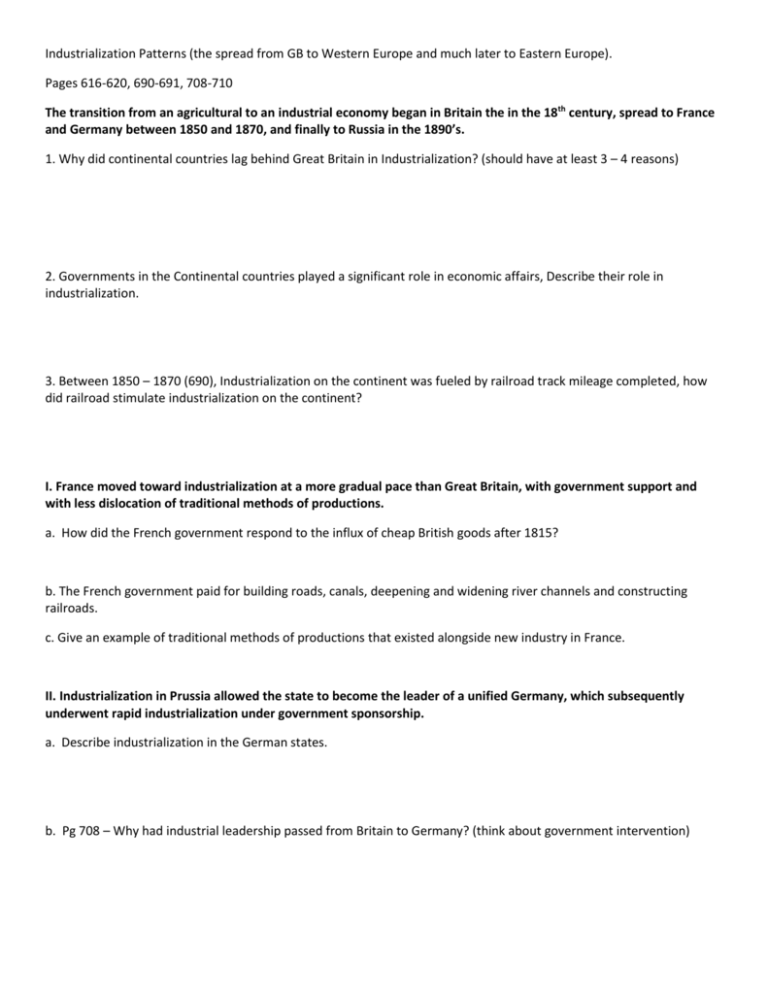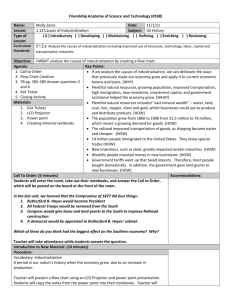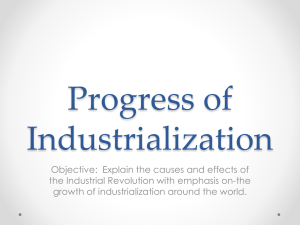Industrialization Patterns (the spread from GB to Western Europe
advertisement

Industrialization Patterns (the spread from GB to Western Europe and much later to Eastern Europe). Pages 616-620, 690-691, 708-710 The transition from an agricultural to an industrial economy began in Britain the in the 18th century, spread to France and Germany between 1850 and 1870, and finally to Russia in the 1890’s. 1. Why did continental countries lag behind Great Britain in Industrialization? (should have at least 3 – 4 reasons) 2. Governments in the Continental countries played a significant role in economic affairs, Describe their role in industrialization. 3. Between 1850 – 1870 (690), Industrialization on the continent was fueled by railroad track mileage completed, how did railroad stimulate industrialization on the continent? I. France moved toward industrialization at a more gradual pace than Great Britain, with government support and with less dislocation of traditional methods of productions. a. How did the French government respond to the influx of cheap British goods after 1815? b. The French government paid for building roads, canals, deepening and widening river channels and constructing railroads. c. Give an example of traditional methods of productions that existed alongside new industry in France. II. Industrialization in Prussia allowed the state to become the leader of a unified Germany, which subsequently underwent rapid industrialization under government sponsorship. a. Describe industrialization in the German states. b. Pg 708 – Why had industrial leadership passed from Britain to Germany? (think about government intervention) III. A combination of factors including geography, lack of resources, the dominance of traditional landed elites, the persistence of serfdom in some areas, and inadequate government sponsorship accounted for eastern and southern Europe’s lag in industrial development. a. Page 708 – Europe was divided into two economic zones – 1. Describe the economic zone of GB, Belgium, France, the Netherlands, Germany, western part of Austria Hungary and Northern Europe (THE WEST) : 2. Contrast that zone with the economic zone of (Eastern and Southern Europe) Russia, Italy, Spain, Hungary: 3. Describe Russia in the mid 19th century: serfdom was established, absolute monarchy, nobles, far flung empire Using Page 709 Answer the following Question Patterns of industrialization: Contrast industrialization indicators in Western Europe to industrialization indicators in Eastern Europe.







